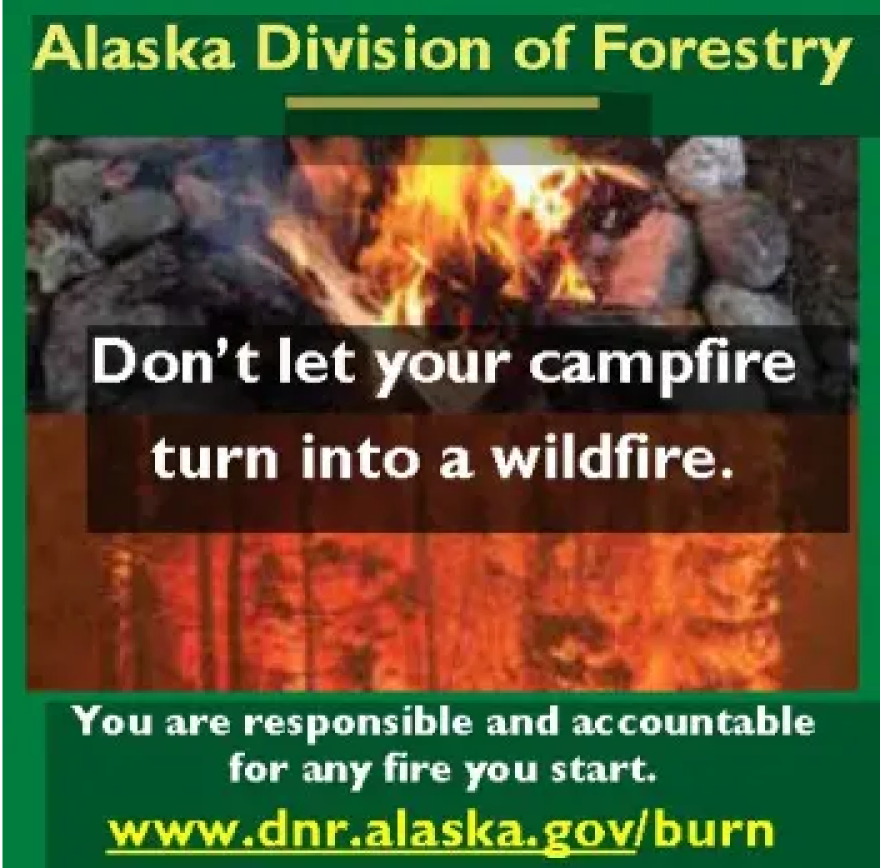Red flag warnings have been canceled, but outdoor burn bans remain in effect, and campfires are discouraged
The National Weather Service is forecasting cooler weather and a chance of rain this weekend for the Interior. So it’s canceled red-flag warnings that were in effect over the past couple of weeks. But the outdoor burn ban remains in effect, and state and federal fire officials advise Alaskans to be careful and report suspected wildfires.
The cooler weather will help reduce the chances of wildfire in the Interior in the short term. But the region’s vegetation has dried-out, so the potential for fire remains high.

“It is very dry,” says Maureen Clark, a spokesperson for the state Division of Forestry.
“And burn permits, even if you have one, they are suspended at this time for much of the state, including Fairbanks, Tok, Kenai, the Mat-Su and also Valdez and the Copper River area,” she added.
Despite the dry conditions, Clark says it’s been a relatively quiet fire season in the Interior, so far. She says there have been a few blazes, like the May 25 1-acre grass fire near Fairbanks and another on May 19 along the Chena River. On Wednesday, Forestry crews responded quickly and snuffed a grass fire in a residential area in Delta Junction. So, firefighters are keeping watch.
“They are patrolling, as needed,” she said in an interview Thursday. “They are responding to smoke reports.”
That’s also pretty much what the federal Alaska Fire Service is doing.
“We’re poised and ready to go, but are still looking for conditions to moderate and maybe give up a little bit of a break,” says Beth Ipsen, a fire service spokesperson.
Ipsen says the agency predicts a normal fire season around the Interior in the weeks ahead. But she says there’s a chance for above-normal temperatures and precipitation in the longer-term outlook.

“Near-normal significant fire potential is expected in Alaska through September,” she said in an interview Thursday. “So, they’re not really predicting extremely busy fire season. But, that could always change.”
Lightning is one of the reasons that prediction could change. The National Weather Service says there’s a chance of thunderstorms this weekend in some areas around the Interior. But Clark says even if those storms do materialize, they’re less of a hazard than dry-lightning storms.
“The storms that concern us are the thunderstorms that are not accompanied by rain,” she said. “There is a possibility of thunderstorms in the Interior over the next few days. And fortunately, they’re likely to be accompanied by some rain.”
Regardless, both Clark and Ipsen urge Alaskans to heed red flag warnings and burn bans. And Clark says they also should for now skip building a fire at their camp.
“We don’t recommend campfires at this time,” she said. “But, they are permitted if you’re in a developed campground. But they do have to be kept small.”
Ipsen reminds that even small fires can present a big potential threat.
“It doesn’t take much for a fire that’s sparked to turn into a devastating wildfire that could burn homes and endanger lives,” she said.



